Ely’s Renaissance Village
Summer 2022
Heritage and history are at home in the heart of eastern Nevada.
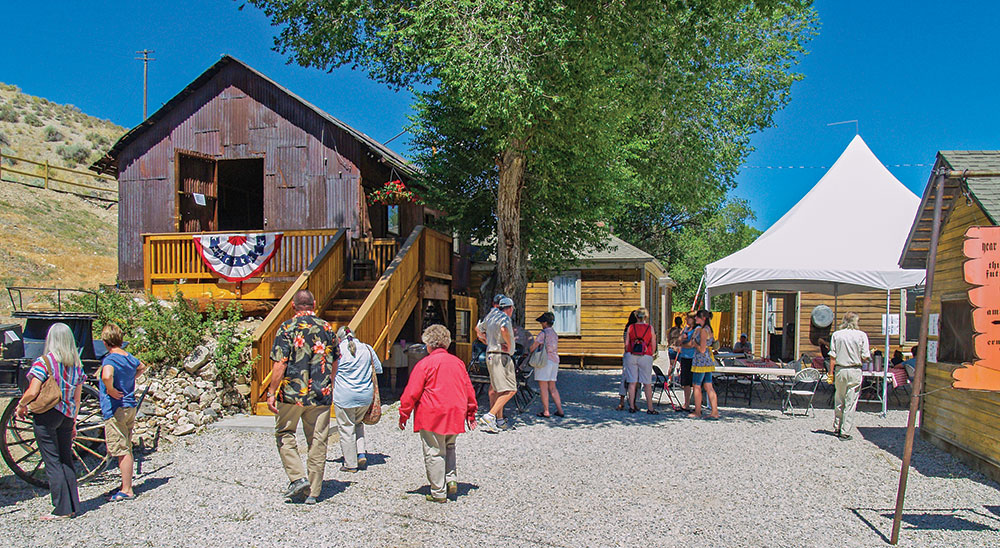
BY CORY MUNSON
Tucked into the hills in northeast Nevada, Ely was a thriving, multi-ethnic community for most of the 20th century. After the town entered a recession in the 1990s, a group of citizens embarked on a mission to transform one ruined block of homes into a place of living history.
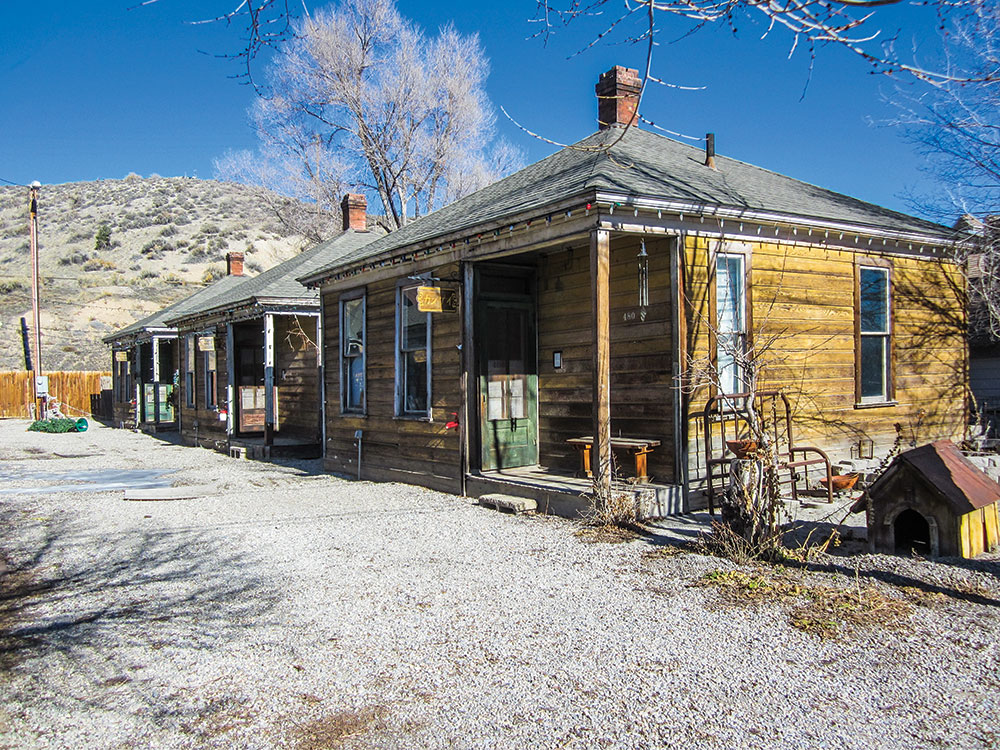
THE RENAISSANCE SOCIETY
In 1999, it was hard times for Ely. The copper mine closed, and with it, 20 percent of the town’s population had left. A once-bustling downtown became a patchwork of abandoned lots and boarded-up businesses
That summer, lifetime residents Margaret Bath and Virginia Terry decided something needed to be done to help the town. They gathered a group of passionate locals and called themselves the Ely Renaissance Society (named after the period of artistic and cultural rebirth in 14th century Europe). The group began researching cost-effective ways to improve communities, and for its first project, worked to cover the town’s faded brick buildings with cultural murals.
Within five years, Basque sheepherders, Italian rail workers, pioneer blacksmiths, and a half dozen other richly colored murals greeted visitors. The project was hailed a success, and with it came a wave of renewed local pride.
The Ely Renaissance Society rode high on the momentum of its first project and looked for more ways to restore the town’s past. An opportunity presented itself in a block of decaying, century-old cottages overlooking the town.
‘UNITED BY OUR CHILDREN’

Built in 1907, the homes were originally intended for railway workers, though most have not been inhabited since the 1970s. When the society purchased the properties in 2005, the structures were in a state of decay. Today, after more than a decade of restoration, the Ely Renaissance Village awaits visitors with 10 beautifully restored homes at its heart.
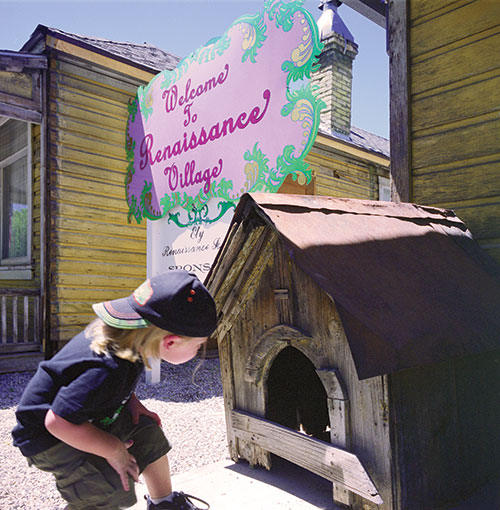
Outwardly, the village captures the daily life of residents in the 1920s, yet its purpose extends beyond a museum: it is a time capsule of Ely’s rich cultural past. Each house represents a prominent culture that laid its roots in town.
As founding members of the society—and village tour guides—Virginia and Glenn Terry wanted these homes to tell the story of Ely’s early days.
“People came from all over the world to work in Ely’s booming mine, ranch, and railroad scene,” explains Terry as he passes through an iron fence and follows a red stone pathway. “Ely was home to Spaniards, Italians, Greeks, Slavs, and a dozen other nationalities.”
“While the parents stayed in their cultural pockets, the children learned English,” says Virginia Terry. “They brought the community together, which is why we say Ely was united by our children.”
Terry opens the door into the first house and steps into the past.

ELY CIRCA 1920
The English House boasts a lovingly decorated living room: a modest chandelier, a piano adorned with scattered sheet music, a radio, a typewriter. These houses feel lived in, as if the occupants ran to the store and guests are there to watch things until they return.
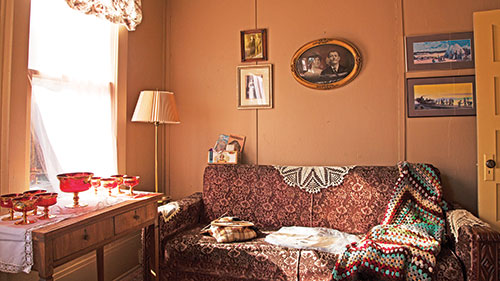
Glenn Terry motions to a 1920s “National Geographic” draped over an armchair. The Renaissance Society worked hard to fill every room with details that depict the time. Adding to this authenticity, everything here—from the radios and kitchen appliances to sewing machines and upholstery—was donated locally.
A long sheepherder’s hook hangs outside the Basque House. Beyond the front door is an unexpected sight: a laundromat. While the men were at work, the rest of the household usually managed any variety of side businesses. The French House boasts a trendy salon, complete with retro hair drying chairs.
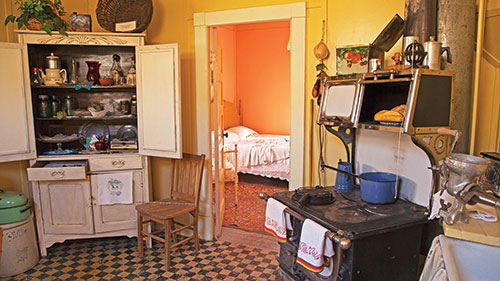
While each is culturally distinct, the cottages all have a living room, a kitchen, one bedroom, and a bathroom. Although these homes are tiny by today’s standards, six family members were often crowded within.
In each kitchen sits a monumental wood stove with an attached water heater—Ely was the first community in Nevada with heated plumbing. The bathrooms feature a stately clawfoot bathtub, though not
all the houses boast a pull chain “flushing apparatus.”
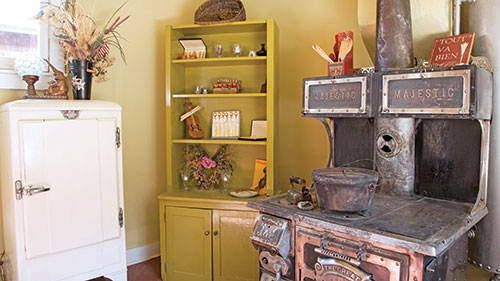
Aside from the period-perfect décor and remarkable attention to detail, the village is also overflowing with stories.Photographs and recollections fill the walls, inviting visitors to meet the town’s early inhabitants. Throughout the homes, the town’s first women are particularly honored. In the Irish House, pictures of the nuns who ran the local parish adorn
the wall.
“Men built the town, but women made the community,” says Glenn Terry.
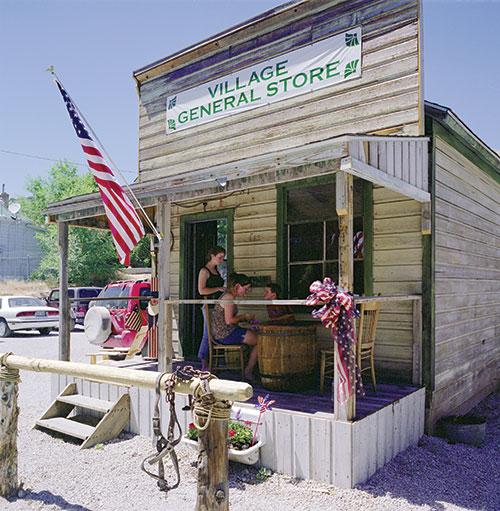
IT TAKES A VILLAGE
A large group pavilion sits at the center of the village. In the warmer months, this is a popular wedding destination. Behind an old barn door hides a fully modern catering kitchen. As the Terrys stand under the pavilion, they say this was all possible through fundraising. In fact, more than 20 years into the society’s existence, they’ve raised more than $500,000 for community projects. Glenn Terry adds that when they purchased this land, one building was filled with antiques, which they were able to restore and sell for more funding.
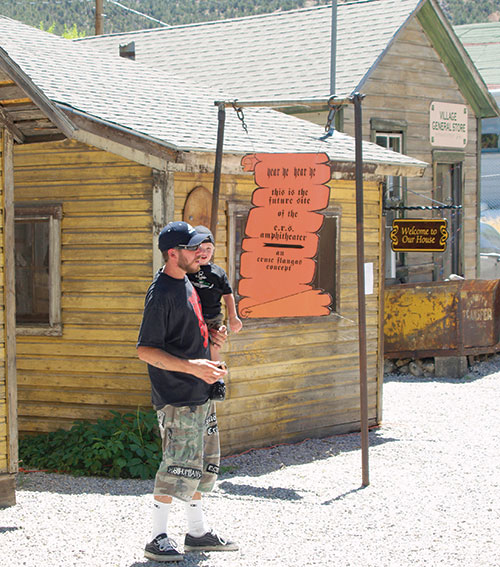
Ultimately, they have been able to do so much through the help of locals. Every part of the village, from building restoration and painting to interior design and pathing, is thanks entirely to volunteer support.



